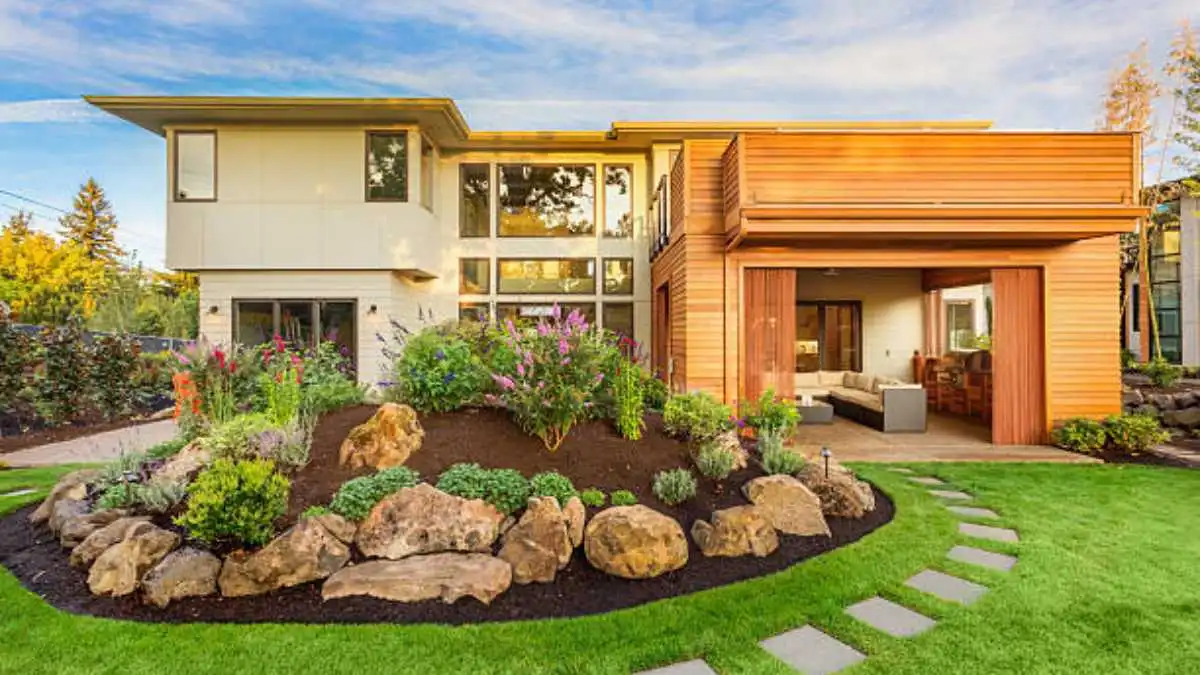HOME IMPROVEMENT
Landscape Design Trends That Elevate Modern Outdoor Living

Introduction
Outdoor living has become more than just a seasonal pastime—it’s now an extension of the home, reflecting style, comfort, and functionality. As design preferences shift and homeowners seek to get more from their outdoor spaces, landscaping trends are evolving to meet these changing expectations.
From smart irrigation systems to naturalistic plantings and multi-functional outdoor zones, the newest developments in landscaping design offer more than curb appeal. They bring added value, energy efficiency, and lifestyle benefits that make outdoor areas as enjoyable and personalized as interior spaces.
Refuge Design & Landscape works with homeowners to incorporate cutting-edge ideas and timeless design principles into projects that reflect today’s modern living. Here are some of the most influential trends shaping outdoor spaces right now.
Table of Contents
Embracing Outdoor Living Rooms
Today’s homeowners are looking to spend more time outdoors without sacrificing comfort. The result is a surge in outdoor “rooms” that mirror the layout and atmosphere of indoor living spaces.
Layered Functionality
Designers are building spaces with distinct zones for cooking, dining, lounging, and even working. Pergolas, fire pits, outdoor kitchens, and built-in seating are among the most popular features. These areas allow for year-round use and offer both open-air and sheltered spaces for relaxation or entertaining.
Seamless Transitions
Modern landscaping design in Twin Cities emphasizes flow between indoors and out. Large patio doors, complementary materials, and coordinated colors help create a visual and practical extension of the home. These details ensure outdoor areas feel intentional—not just added on.
Low-Maintenance Planting Palettes
Busy homeowners want beauty without burdensome upkeep. This trend is fueling a shift toward sustainable, drought-tolerant plants that look great with minimal effort.
Native and Adaptive Plants
Using regionally appropriate plants not only saves water but also reduces reliance on fertilizers and pesticides. Native species are more resilient to local pests and climate fluctuations, making them ideal for low-intervention landscaping maintenance.
Structured Simplicity
Instead of intricate garden layouts, many modern designs favor clean lines and simplified planting schemes. Repetition of a few key species—intermixed with ornamental grasses or evergreen shrubs—creates a polished look that’s easy to maintain.
Smart Technology in the Garden
Technology is playing a growing role in landscaping services, offering convenience, efficiency, and precision in outdoor care.
Automated Irrigation
Smart irrigation systems adjust watering schedules based on weather forecasts and soil moisture levels. These systems optimize water use and ensure plants receive the right amount of hydration—without daily guesswork or overwatering.
Landscape Lighting Control
Wi-Fi-enabled lighting systems allow homeowners to adjust brightness, color, and timing remotely. These features enhance safety, highlight design features, and adapt to different activities, all from a smartphone or tablet.
Edible Landscaping
Gardens are no longer just ornamental. More homeowners are incorporating fruit trees, herbs, and vegetables directly into their landscape design.
Blending Form and Function
Edible plants can be both attractive and practical. Blueberry shrubs, rosemary hedges, and ornamental kale are just a few examples of plants that serve a dual purpose. When integrated with intention, these features add beauty while providing fresh, homegrown produce.
Raised Beds and Vertical Gardens
Limited space doesn’t mean limited options. Raised garden beds, trellises, and wall-mounted planters make it possible to grow food even in compact areas—enhancing both visual interest and utility.
Water Features with a Modern Twist
Water has long been a part of beautiful landscaping, but the modern approach favors subtlety, sound, and sustainability.
Sleek Designs
Instead of elaborate fountains, newer features often incorporate linear forms and smooth materials. Reflecting pools, minimalist spillways, and stone basins deliver serenity and sound without overwhelming the design.
Eco-Friendly Choices
Recirculating systems reduce water waste, while solar-powered pumps and native aquatic plants create environmentally conscious accents. These additions help support local biodiversity and reduce operational costs.
Gravel, Pavers, and Permeable Surfaces
Managing stormwater and runoff is a growing priority in landscaping services. Design choices now include hardscapes that are as functional as they are stylish.
Permeable Paving
Instead of traditional concrete, permeable pavers allow water to seep through to the ground below. This prevents pooling and erosion while supporting sustainable drainage systems.
Gravel and Crushed Stone
These materials provide texture and contrast while allowing for water movement and weed control. They’re often used in pathways, garden borders, and seating areas for a modern, low-maintenance alternative to turf.
Minimalist, Modern Aesthetic
As with interior design, the minimalist trend continues to influence outdoor environments. The focus is on intentionality, balance, and simplicity.
Clean Geometry
Modern landscaping design often incorporates straight lines, rectangular patios, and modular planters. This geometric approach emphasizes form and function, making outdoor spaces feel calm and organized.
Strategic Plant Placement
Instead of densely planted beds, minimalist designs rely on negative space and selective grouping. Each element—be it a tree, sculpture, or planter—is placed for maximum visual impact.
Sustainability as a Design Priority
Today’s homeowners are more environmentally conscious and want outdoor spaces that reflect those values.
Compost and Mulch Zones
On-site composting bins and mulch beds help reduce waste and return nutrients to the soil. These features support healthy plant growth and reduce the need for synthetic additives.
Wildlife-Friendly Landscapes
Bird-friendly plants, pollinator gardens, and native hedgerows support local ecosystems and biodiversity. These features also provide seasonal interest and natural beauty throughout the year.
Refuge Design & Landscape integrates sustainable materials and practices into projects for clients seeking long-term value and environmental stewardship.
Year-Round Appeal
A well-designed outdoor space isn’t just for summer. Homeowners are prioritizing landscapes that offer functionality across all seasons.
Four-Season Planting
Designing with plants that offer visual interest year-round—like evergreens, winter berries, and flowering trees—ensures your landscape looks vibrant even in colder months.
Outdoor Heating Options
Fire tables, patio heaters, and enclosed garden structures help extend the usability of your outdoor space into the fall and even winter, offering cozy spots to enjoy the outdoors longer.
Conclusion
Modern landscaping design is all about intentional living—creating outdoor spaces that match your lifestyle, values, and aesthetic preferences. Today’s trends prioritize functionality, sustainability, and visual cohesion, blending innovation with natural beauty.
Whether you’re starting from scratch or updating an existing space, understanding these emerging trends helps you make informed decisions that enhance your property and the way you enjoy it. From outdoor rooms to low-maintenance planting and smart technology, there’s never been a better time to rethink your landscape.
Refuge Design & Landscape stays at the forefront of design trends and landscaping services, delivering modern, personalized, and sustainable solutions that make your outdoor space truly your own.
-

 GENERAL2 months ago
GENERAL2 months agoUncovering the World of кинокрадко: The Dark Side of Film Piracy
-

 GENERAL1 month ago
GENERAL1 month agoUnveiling the Art of преводсч: How Translators Bridge Language Barriers
-

 YOGA1 year ago
YOGA1 year ago4 Person Yoga Poses for Beginners
-

 GENERAL2 months ago
GENERAL2 months agoThe Journey of iamnobody89757: From Anonymous User to Internet Sensation


























